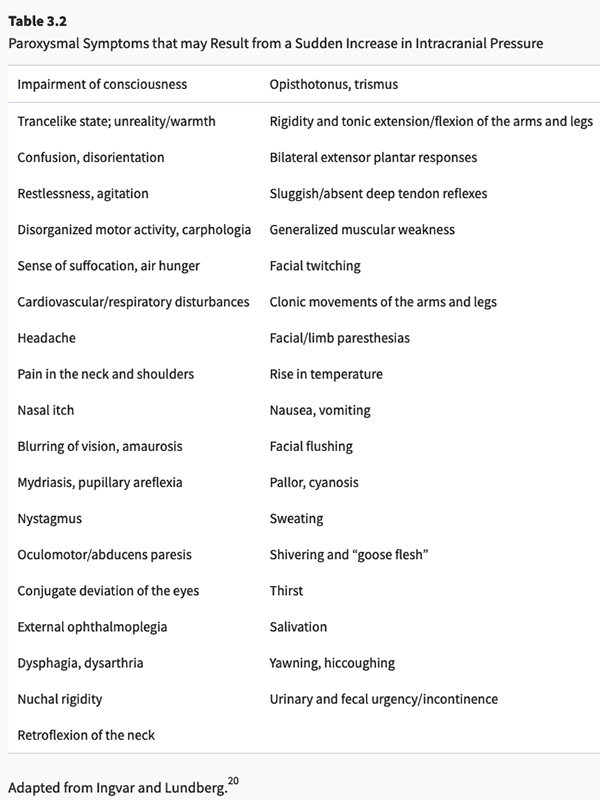Great job! This patient's case was particularly challenging and highlights how difficult it can be to follow along as a procedural consultant. Our initial suspicion of seizures was reasonable, but later proved to be incorrect. In retrospect, while the neurology team was responsible for evaluating her episodic abnormal movements, it would've been helpful for us to know if she was having persistent events despite ASMs-- provided we knew to think about plateau waves at the beginning.
We really had to challenge ourselves to avoid anchoring bias and to avoid tunnel vision on interventions that would usually be dictated by radiographic changes alone. Plateau waves are under-recognized, yet missing the diagnosis can be fatal. Of course, whether surgery can be offered is complicated, dictated by the clinical circumstances and personal intuition and experience. If the interval between the decline and recognition is short, however, intervention for even palliative purposes is reasonable as long as there are no other disqualifying factors.
When called to evaluate a patient that has been having episodic neurologic signs/symptoms, it makes sense to think of common etiologies such as seizures and strokes. However, plateau waves are underappreciated and probably more common than we realize. Don't anchor and fall for the trap of evaluating only for seizure vs. stroke and then walking away. Consider whether something like intracranial hypertension could be the etiology, and whether anything in the patient's presentation could suggest a more ultimate cause for it.
The table below, from Chapter 3 of Plum and Posner's Diagnosis and Treatment of Stupor and Coma, lists the paroxysmal symptoms that have been reported to occur with plateau waves:

You'll notice how non-specific and, in some cases, non-focal, these symptoms are. Humbling. This also highlights how crucial it is to maintain a high index of suspicion for intracranial hypertension when invasive monitoring is not present.